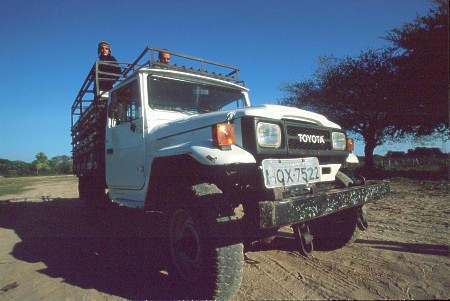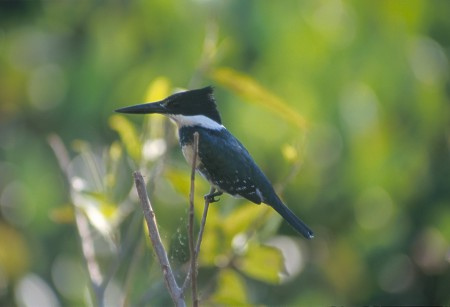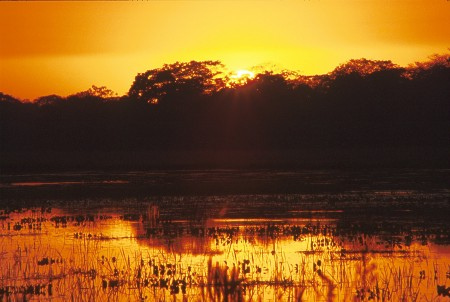About the Pantanal
The Pantanal is a shallow hydrographical basin served by a complex network of rivers. Although there are some hills and high points, the area is almost completely flat. This means that the area is susceptible to flooding through the wet season.
The heaviest rains falls in the highlands at the northern end of the Pantanal. A very slight incline results in the annual floodwaters flowing very slowly from north to south - taking several months to pass over the region and drain entirely. Slow drainage means that the majority of the waters entering the Pantanal actually leave through evaporation. This an important part of a process called evapotranspiration where water is absorbed by the environment, with the excess being returned into the atmosphere - helping trigger further rains elsewhere. The result of this is a mosaic of different landscapes which change dramatically throughout the year, and provides a home to a diverse range of wildlife.
The region’s annual flood cycle has saved the Pantanal from major development. The rich natural grasslands have become the basis for cattle ranching – with local ranchers moving their herds from region to region ahead of the annual flood cycle. Because the cattle and the wildlife both depend on the same resources, this has limited development and modification of the natural landscape. Cattle and wildlife live alongside each other in relative harmony.
Private cattle ranches (about 2500 individual ranches) collectively cover around 99% of the Pantanal, and host an estimated 8 million head or cattle.
A visit to a working cattle ranch is the ideal way to experience the Pantanal. You’ll not only encounter the region’s diverse local wildlife – but it also provides a rare opportunity to experience Pantaneiro culture and tradition. Rather than changing the landscape, the local Pantaneiro inhabitants have adapted to their environment.
The Pantaneiro is a unique type of South American cowboy: tough, practical, and self-reliant. Although reduced by the advent of modern cattle trucks, their once frequent cattle rides (needed to move cattle ahead of flood waters, or for suitable dry season pastures, or to market) typically lasted several weeks or months. These were arduous journeys taking the herds through rivers and swamps, and dealing with dangers such as insects, snakes, jaguars and tropical disease.
As a result, Pantaneiros have become renowned for their resilience, horsemanship, and their ability to fashion whatever they needed out of locally-available materials. Even the horses they ride are unique. The Pantaneiro horse breed is small but sure-footed and is able to survive the aquatic landscape. These horses are agile through mud and deep water, resistant to diseases that would destroy most other breeds, and have even learned to graze in the wetlands with their faces underwater.
Multimedia Links








Banner: Aerial view of the Pantanal (iStock/Valter Cunha).
Bandeirante, Sunset, and Kingfisher (Andrew Mercer)
Pantanal Escapes